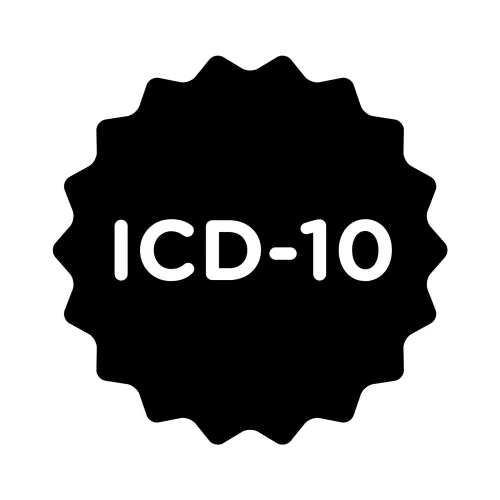Ophthalmology and Optometry Coding Alert
Focus on These 5 MPFS Final Rule Takeaways
Will payment cuts impede patient access to sight-saving procedures? Expect some give and take in the calendar year (CY) 2023 Medicare Physician Fee Schedule (MPFS) final rule, released Nov. 1. Actions everyone can get behind include advancing health equity and expanding access to top-notch comprehensive healthcare. But beware — physicians are facing greater pay cuts than originally anticipated. The 1,297-page fee schedule is chock full of billing revisions and payment provisions that may impact how your eye care practice provides and reports evaluation and management (E/M) services, telehealth, and ophthalmic surgery. Keep reading to learn about five policies that will likely impact your Medicare reimbursement. Coverage of Temporary Telehealth Codes Continues The Centers for Medicare & Medicaid Services (CMS) is keeping a number of the temporary telehealth codes in place as Category III codes due to the ongoing COVID-19 public health emergency (PHE) through at least 2023. While coverage of certain other services listed under the temporary column in the Telehealth Services list will expire 151 days following the conclusion of the PHE for COVID-19, which was renewed for another 90 days on Oct. 13 and is set to end on Jan. 11, 2023. Providers will continue to bill with the place of service indicator that would have been reported had the service been furnished in person and append modifier 95 (Synchronous telemedicine service rendered via a real-time interactive audio and video telecommunications system) to the claim to identify them as services rendered via telehealth. This applies “through the later of the end of the year in which the PHE ends or CY 2023,” per the final rule. Of interest to eye care practices, the agency is maintaining CPT® 92002 (Ophthalmological services: medical examination and evaluation with initiation of diagnostic and treatment program; intermediate, new patient) and 92004 (... comprehensive, new patient, 1 or more visits) on the list through 2023; however, CMS will remove 92002 and 92004 from the Medicare Telehealth Services list after 151 days following the end of the PHE — which absent another extension is June 11, 2023 — whereas CPT® codes 92012 (Ophthalmological services: medical examination and evaluation, with initiation or continuation of diagnostic and treatment program; intermediate, established patient) and 92014 (… comprehensive, established patient, 1 or more visit) will be included on the Medicare Telehealth Services list through the end of 2023. “Keep in mind that each third-party payer has their own telehealth rules and may require different treatment of the place of service and require different modifiers. Claims must adhere to each third-party payer’s requirements as there is no one policy implemented across the board,” says Barbara J. Cobuzzi, MBA, CPC, COC, CPC-P, CPC-I, CENTC, CPCO, CMCS, of CRN Healthcare in Tinton Falls, New Jersey. Cataract, Retinal OBSs Remain Under Consideration In response to its proposal to establish an office-based payment for cataract surgery, minimally invasive glaucoma surgery (MIGS), vitrectomy, and other ocular surgery procedures, CMS received input detailing apprehensions about these services being furnished as OBS (office-based surgery). The final rule states: In the final rule, CMS agrees to evaluate further, which may include analyzing outcomes data on the success of surgeries in this setting, before moving forward with establishing any values. RVU Changes for Ophthalmic Procedures Finalized CMS is accepting both the Relative Value Scale Update Committee (RUC)-recommended relative value unit (RVU) of 0.71 and practice expense (PE) for CPT® code 92065 (Orthoptic training), as well as the recommended work RVU of 0.40 and PE for 92287 (Anterior segment imaging with interpretation and report; with fluorescein angiography). Alternatively, the agency is rejecting the RUC-recommended RVU of 0.14 for CPT® code 92284 (Dark adaptation examination with interpretation and report), stating it believes the technology has led to greater efficiencies in the service, necessitating a reduction in the work RVU. The American Optometric Association (AOA) anticipates that this reduction in work value to 0.00 will impact reimbursement significantly, with an average decrease of $12, and will continue to work with CMS to ensure reimbursement reflects the physician work involved. Overhaul of Other E/M Services Approved To better align with previous changes made to office/outpatient E/M service codes in the CY 2021 MPFS final rule, CMS is pushing forward with AMA CPT® Editorial Panel-approved revisions to coding and guidelines for “other E/M visits” — hospital inpatient, hospital observation, emergency department (ED), nursing facility, home or residence services, and cognitive impairment assessment — effective Jan. 1, 2023. In a nutshell, CMS is accepting the changes for these E/M visits, which include adopting new code descriptors/definitions and utilizing the same interpretive guideline revisions for levels of medical decision making (MDM) as CPT® adopted in 2021 for office/outpatient E/M services. This means nixing the use of history and exam for leveling and instead using physician time or MDM to determine code level for the majority of the code sets. These updates will bring Medicare in line with the CPT® revisions for the services. Payment Rates Cut More Than Expected The final 2023 MPFS conversion factor (CF) is $33.06, a decrease of $1.55 from the CY 2022 MPFS CF of $34.61. The final rule establishes a 4.47 percent cut to payments under the 2023 fee schedule, a number that could increase to as much as 8.47 percent when other cuts, such as the 4 percent PAYGO sequester, are added into the equation. Stakeholders had hoped for an improvement over the proposed rule’s 4.42 percent reduction of the CF, but the final rule’s methodology resulted in a slightly higher decrease. CMS’ decision to move forward with a conversion factor decrease has drawn industry ire. “The final rule comes amid surging medical inflation and staff retention challenges practices are experiencing across the country,” said George Williams, MD, AAO’s senior secretary for advocacy, “As the value of Medicare physician payments continues to plummet on an inflation-adjusted basis, the cuts will further diminish the financial support which surgical practices around the country rely on at a time when they need it most.”

Related Articles
Ophthalmology and Optometry Coding Alert
- Medicare Physician Fee Schedule:
Focus on These 5 MPFS Final Rule Takeaways
Will payment cuts impede patient access to sight-saving procedures? Expect some give and take in [...] - Risk Adjustment:
Sharpen Your Risk Adjustment Coding Skills in 4 Easy Steps
Remember: Not all diagnoses risk-adjust. If you are looking for ways to boost your ophthalmology [...] - Billing Basics:
Get the Scoop on Changes to Medicare Benefits for 2023
Let this Q&A shed light on how these updates will impact patients and reimbursement. Every [...] - You Be the Coder:
Differentiate Between QHPs and Staff for Definitive Documentation
Question: There are times when a patient says something to ancillary staff, but there’s no [...] - Reader Question:
Establish This Rule for New Patient Encounters
Question: I have been reporting all services performed by our nurses, including those provided to new [...] - Reader Question:
Understand Why You Shouldn’t Report 67255 With 66180
Question: Our coding team is unsure about whether we can report 66180 and 67255 together. [...] - Reader Question:
Eliminate Uncertainty When Deciding ‘Unspecified’ vs. ‘Other’
Question: Can you explain the difference between H16.8 and H16.9? I often have trouble choosing between [...]




